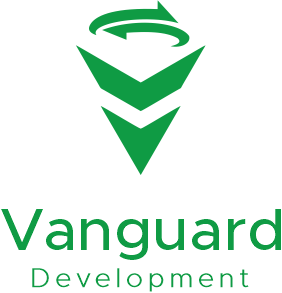Navigating the Landscape: Top 5 Financing Strategies for Commercial Developers
In the ever-evolving world of commercial development, securing the right financing is essential for transforming ideas into impactful projects. For commercial developers, a tailored financing strategy can open doors to larger opportunities, reduce risk, and enhance project scalability. This guide explores five of the top financing strategies that commercial developers can leverage to fund their projects effectively.
1. Traditional Commercial Loans
Traditional commercial loans remain one of the most common financing options for commercial developers. Offered by banks and financial institutions, these loans provide a straightforward approach to funding, with set repayment terms and interest rates.
Key Characteristics
- Fixed or Variable Interest Rates: Developers can choose between fixed rates for consistent payments or variable rates that may fluctuate over time.
- Amortization Options: Long-term amortization can lower monthly payments, making it easier to manage cash flow.
- Collateral Requirement: Often secured by the property, ensuring lower risk for the lender.
Advantages
- Predictable Repayment Schedule: Fixed terms provide stability in financial planning.
- Accessibility: Many financial institutions offer traditional loans with competitive terms for creditworthy developers.
Challenges
- Credit-Dependent: Requires a solid credit history and financial standing.
- Down Payments: Typically requires a significant down payment, which may limit accessibility for some developers.
Traditional commercial loans work best for developers seeking straightforward financing options and stable long-term repayment plans. However, understanding each lender’s terms is critical to finding the most favorable rates and conditions.
2. Mezzanine Financing
For developers looking to fill the gap between equity and senior debt, mezzanine financing offers a hybrid approach that can increase leverage while minimizing upfront capital.
Key Characteristics
- Debt-Equity Hybrid: This financing combines elements of both debt and equity, often including options for lenders to convert debt into ownership if repayment terms aren’t met.
- High Flexibility: Mezzanine financing is typically used to bridge the gap when traditional loans don’t cover the full cost of a project.
Advantages
- Enhanced Leverage: Allows developers to secure additional funds beyond what traditional loans provide.
- No Immediate Ownership Dilution: Although it may include options for conversion, developers retain full ownership unless repayment terms aren’t met.
Challenges
- Higher Interest Rates: Reflects higher risk taken on by the lender.
- Complex Structuring: Requires a comprehensive understanding of debt-equity agreements and their potential implications.
Mezzanine financing is ideal for experienced developers who need a flexible solution to bridge funding gaps, enabling them to undertake more ambitious projects without fully diluting ownership.
3. Joint Venture (JV) Partnerships
Joint Venture (JV) partnerships are a powerful strategy for developers who want to share the financial responsibility and risk of a project with another entity. JVs involve two or more parties pooling resources, skills, and capital to jointly undertake a commercial project.
Key Characteristics
- Shared Risk and Return: Both parties share in the profits and risks based on pre-determined terms.
- Collaborative Structure: Partners contribute resources, whether in the form of capital, expertise, or connections.
Advantages
- Access to Additional Capital: Provides access to a larger pool of funds without burdening a single entity.
- Risk Mitigation: By partnering with another investor or developer, financial risk is spread across all parties involved.
- Enhanced Expertise and Resources: Partnerships often bring in expertise or resources that might not be available otherwise.
Challenges
- Complex Agreements: Joint ventures require clear legal agreements to define roles, responsibilities, and profit distribution.
- Potential for Conflicts: Differing visions or financial goals between partners can lead to challenges.
JV partnerships are best for developers who can benefit from collaborative efforts and shared resources. This financing option allows for greater project scale while minimizing individual risk, making it especially appealing for large-scale or complex developments.
4. Bridge Financing
Bridge financing offers short-term funding solutions that help developers cover immediate financial needs, such as property acquisition or pre-construction costs, until they secure long-term financing.
Key Characteristics
- Short-Term Solution: Typically 6 to 24 months, bridge loans are used to “bridge” gaps in funding.
- Higher Interest Rates: Reflecting the short-term nature and risk, bridge loans often come with higher rates.
Advantages
- Speed: Bridge loans can be approved quickly, allowing developers to seize time-sensitive opportunities.
- Flexibility: Funds can be used for a range of project needs, from land acquisition to preliminary development work.
Challenges
- High Costs: Short-term loans come with higher interest rates and fees, which may impact overall profitability.
- Repayment Pressure: Given the short-term nature, developers must have a clear exit strategy or subsequent financing in place.
Bridge financing is ideal for developers needing quick access to funds to move projects forward rapidly. It works well for developers who are confident in securing long-term financing but need interim support for immediate project stages.
5. Non-Recourse Project Financing
Non-recourse project financing is a popular choice for developers seeking to protect their personal assets while pursuing large projects. In non-recourse financing, the loan is secured solely by the project itself, meaning lenders cannot pursue the developer’s other assets if the project fails.
Key Characteristics
- Limited Liability: The lender’s recourse is limited to the project’s assets.
- Collateral-Based: Primarily based on the project’s potential for income and collateral value.
Advantages
- Risk Minimization: Protects personal assets by limiting liability to the project itself.
- Attractive to Institutional Investors: Institutional lenders often prefer non-recourse financing due to its alignment with their risk management policies.
Challenges
- Higher Costs and Interest Rates: Reflects the risk taken on by the lender.
- Stringent Requirements: Often involves thorough project feasibility analyses and due diligence.


Leave A Comment